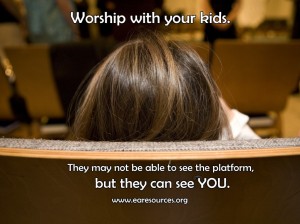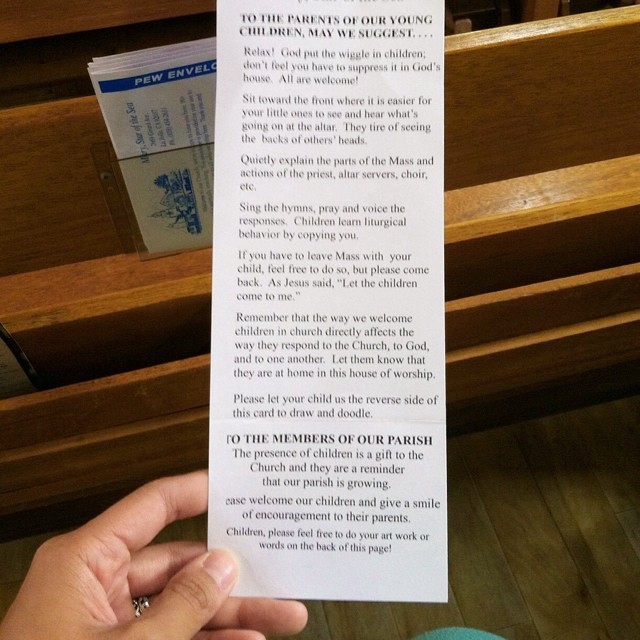
© 2010 Richard Masoner / Cyclelicious, Flickr | CC-BY-SA | via Wylio
Several years ago, I interviewed for a position in Ohio. Whenever talking about their church’s vitality, they would always reference the “Teen Section” during worship services. For those who have not heard the term, “Teen Section” is an area of the auditorium where all the adolescents sit together each week during services. The search committee would discuss how large the section was. They would discuss how faithful the section was. They would discuss how active the section was during worship.
This was not the first time that I had heard a teen section is a sign of a healthy church, and I doubt that it will be the last. During the interview, I held my tongue, but here is what I wanted to say:
Five Reasons Why Your “Teen Section” promotes sickness within your community.
1. It trains adolescents to seek out and require “peer-driven” experiences.
Adolescents who are limited to a “Teen Section” experience of Christianity are going to struggle as they phase out of age-segregated programming. I believe that one reason why so many emerging adults leave the church is because they graduated from youth group, and gave up trying to find the “post-teen” section.
2. It teaches our community that teenagers are not a part of normal human society, but are a subset with strange interests, wild behaviors, and raging hormones.
It is good for adolescents to have their own space. Due to their raging hormones and rebellious behavior, they are “other,” meaning not like us, and barely human. It promotes low expectations among teenagers, and continues the myth that rebellion is a natural part of the adolescence experience.
3. It separates parents from their children during corporate worship.
 Worship services are a time when my children can see what parents value, what parents believe, and what parents feel about faith. Research by Sticky Faith reveals that only 12% percent of youth have a regular dialogue with their mom on faith or life issues. This same research shows that only 5% have regular faith or life conversations with their dad. (Sticky Faith, 71) By establishing and promoting a “teen section,” we have ceased to support the spiritual development that happens within the familial context.
Worship services are a time when my children can see what parents value, what parents believe, and what parents feel about faith. Research by Sticky Faith reveals that only 12% percent of youth have a regular dialogue with their mom on faith or life issues. This same research shows that only 5% have regular faith or life conversations with their dad. (Sticky Faith, 71) By establishing and promoting a “teen section,” we have ceased to support the spiritual development that happens within the familial context.
4. It isolates adolescents from the body of Christ, leaving the community weak and sickly.
It is not simply that Emerging Adults need us, but the church must realize that we need them. I have never heard someone say, “Wow, our church is so healthy. You should see our retirement section! Their section is so vibrant and they love being with each other.” Seriously, think about it. We would not say it about other parts of the body of Christ; therefore, we should not say it about adolescents. The body of Christ is at peak strength when we do not see another’s faults, money, race, status, or age, but serve hand in hand without discrimination.
5. It perpetuates the myth that “peer-driven” relationships and age-segregated programming are crucial to spiritual development.
While I do desire that my children develop friendships with peers, I also want them to have an entire network of people at various life stages who will encourage them in their faith. While popular in our society, age-segregation is not Biblical or healthy. By not speaking up for the unity of the body of Christ, we continue to promote segregation and ageism within the church.
As we consider the “teen-section,” each church must ask what values, ideals, and practices should be developed within its community.
As Christians, we often promote the “Teen Section” as a sign of life because we as the church feel beaten up in this life. The world is winning the war for our kids. We are losing. Pointing out the “Teen Section” gives us hope for the future of the church, and makes us feel better.
We must remember it is His church, and the gates of hell will not prevail against it.
Let us work for new signs of life in our communities. Lives being changed. Hope being found. Acceptance being granted. Care being received. Love being spread. The Kingdom being restored.
 Dr. G. David Boyd is the Founder and Managing Director of EA Resources. You can follow his publications on Twitter at @G_David_Boyd as he writes on Manhood, Emerging Adults, Faith, and the church. He is the proud father of three children – Josiah, Andrew, and Tobi.
Dr. G. David Boyd is the Founder and Managing Director of EA Resources. You can follow his publications on Twitter at @G_David_Boyd as he writes on Manhood, Emerging Adults, Faith, and the church. He is the proud father of three children – Josiah, Andrew, and Tobi.
Resources Referenced:
Sticky Faith by Kara Powell and Chap Clark
 Over the weekend, I went to church with my family. A family sat behind us with a young child who definitely didn’t understand what it meant to sit and listen quietly. While I found it occassionally distracting, my son just found it appalling. He was upset that the young child kept kicking his chair and that the family did nothing about it.
Over the weekend, I went to church with my family. A family sat behind us with a young child who definitely didn’t understand what it meant to sit and listen quietly. While I found it occassionally distracting, my son just found it appalling. He was upset that the young child kept kicking his chair and that the family did nothing about it.







